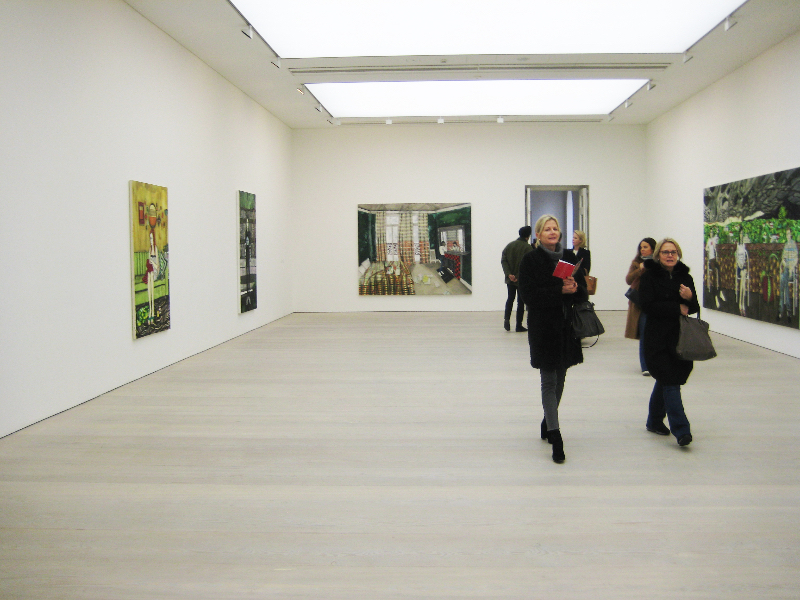Painter’s Painters at the Saatchi Gallery, curated, or at any rate with a catalogue introduction by Martin Gayford , co-author with David Hockney of A History of Pictures, recently published by Thames & Hudson, picks up the theme of figurative painting as a still essential and central form of art making, and tries to give it a new spin. It has, alas, been rather badly received by the press, with unenthusiastic reviews in both the Telegraph and the Evening Standard, and not much publicity elsewhere. Gone are the days, it seems, when what happened at the Saatchi Gallery, at its previous two less magnificent locations, and indeed briefly when it first opened at this one, seemed to set the agenda for the London contemporary art world.
The hugely expanded Tate Modern, grandee commercial galleries such as White Cube, Gagosian, Pace, Hauser & Wirth all now offer a lot of competition. When I went to see the show, or a recent Saturday, the Christmas Market in Duke of York Square outside the gallery, was bustling with people, and the gallery, though not by any means deserted, seemed by comparison under-populated.
Yet the truth is that, if you want to look at the art of right now, this space – free entry – still offers one of the best places to do so. The galleries are large and light, the art itself is elegantly displayed.
And in this case nearly all the paintings are huge, so, even if the show attracted a much bigger audience than the one I found there when I visited, you wouldn’t have to elbow other spectators aside to see them.
The Telegraph’s critic complained that all the artists included in the show were men, but this seems to me a fairly trivial complaint. The Saatchi Gallery hasn’t been reluctant to feature women’s work in the past, and there’s currently a major emphasis on female artists elsewhere, Three of the four contenders in the current Turner Prize show at Tate Britain are women.
It’s perhaps more relevant to note that the nine artists included in the exhibition don’t add up to anything that looks even remotely like an art movement, They are of different generations, and, while most of them are either British or American, there is also one Australian. He has a Scandinavian sounding name and studied in Warsaw, Oslo, Amsterdam, and Maastricht. What all the participants do have in common is that they mostly paint very large and that their work is figurative.
One other thing: they all embrace a kind of primitivism, Gayford alludes to Gauguin as a major influence for two of them. He also, at one moment, murmurs about Basquiat. There are also things, in the work of quite a few of them, that suggest the throw-it-all-in and see what happens methodology of Rauschenberg.
I think, in the end, what struck me most forcefully was quite simply the scale. Ever since Abstract Expressionism, ambitious artists have felt it necessary to wrestle with great big canvases,
Often, however, this mighty scale, accompanied by forced primitivism, seems out of place. You feel like saying “Er, yes, I’ve got what you want to tell me – but could you please address me a little more quietly.” Put the loudhailer down, baby.
The two paintings I enjoyed most were these:
One, by Raffi Kalenderian, shows two zebras symmetrically placed in a rather skeletal woodland, with sunflowers nevertheless blooming in the foreground. It recalled Douanier Rousseau and would make a good cartoon for a tapestry.
The other, by David Brian Smith, shows a shepherd, head bowed, standing in a mystically illuminated landscape surrounded by his flock. What it reminded me of was Giotto.

